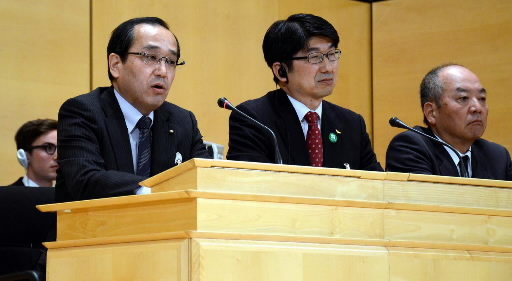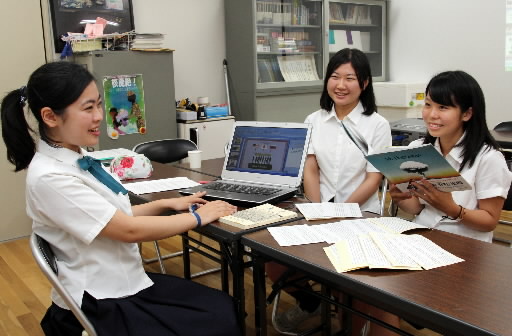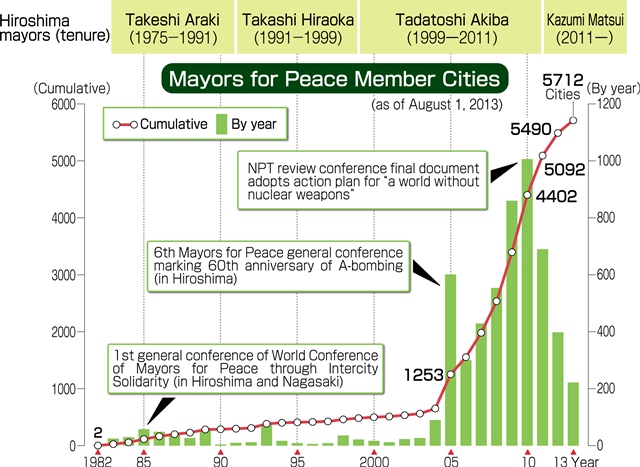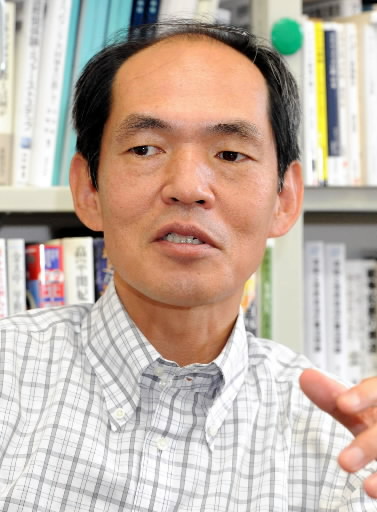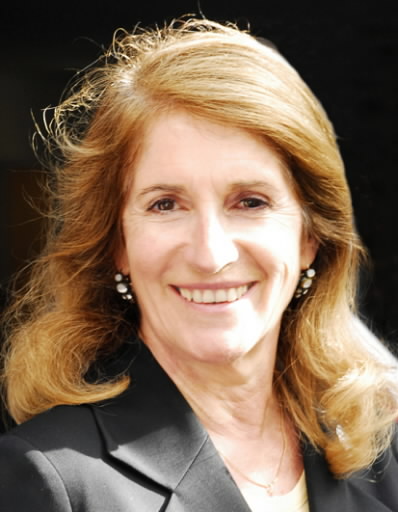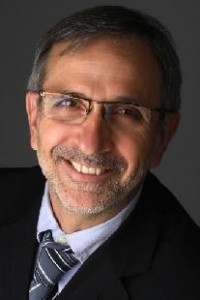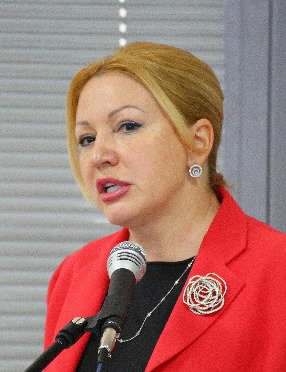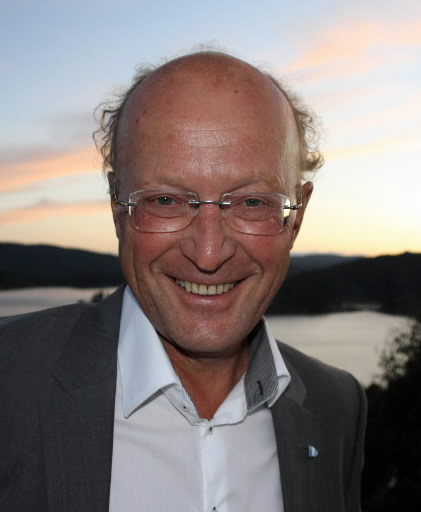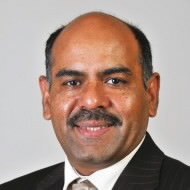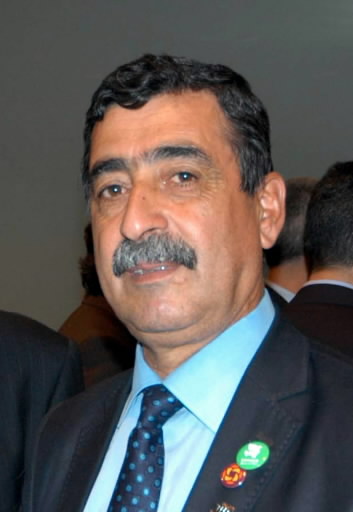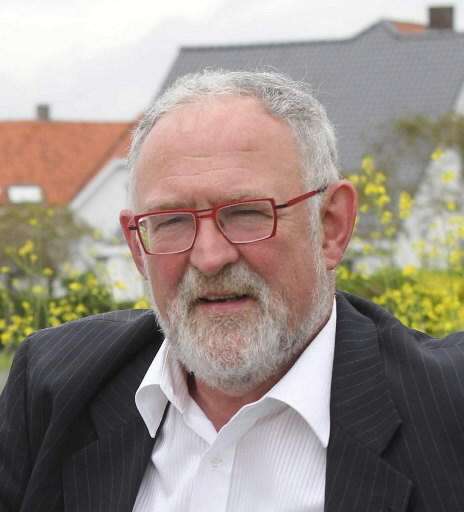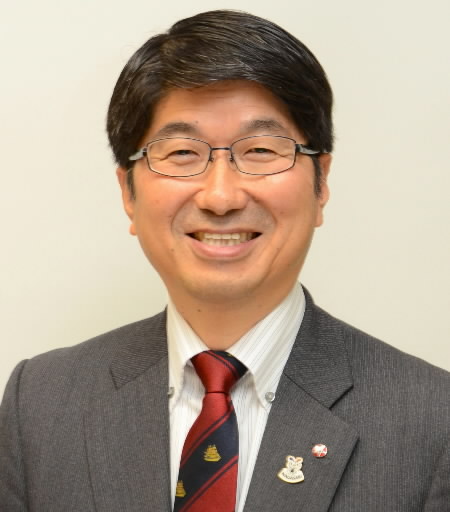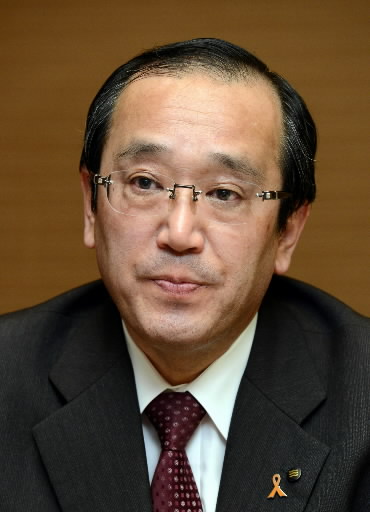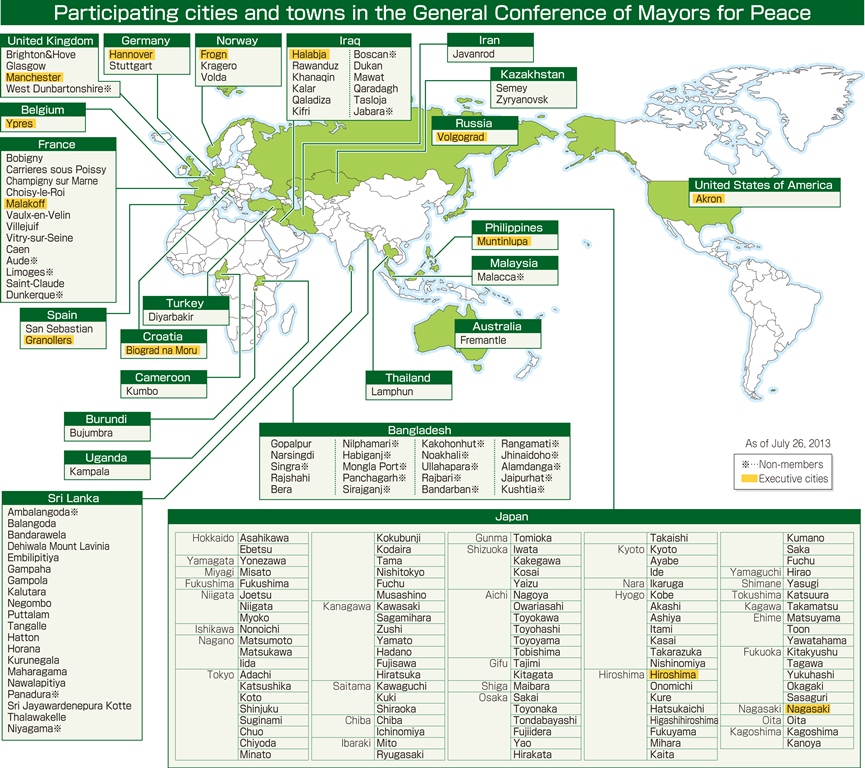Mayors for Peace Conference in Hiroshima, August 3-6
Aug. 5, 2013
Common desire for nuclear abolition: Solidarity among growing number of cities
by Kohei Okata and Aya Kano, Staff Writers
Mayors for Peace, which will hold its general conference at the International Conference Center Hiroshima August 3-6, traces its origins back to Mayors for Peace through Intercity Solidarity, which was launched in 1982 in response to a call by the mayors of Hiroshima and Nagasaki. In the 31 years since then, the coalition of mayors working toward the abolition of nuclear weapons has grown to 5,712 member cities today. Ahead of the general conference, which will be held in Hiroshima for the first time in eight years, the Chugoku Shimbun looked back at the organization’s history, conducted a survey of its executive cities and, with the analysis of an expert, looked at the role cities should play in bringing about a world without nuclear weapons.
In order to end the stagnation on nuclear disarmament, non-nuclear-weapon states and non-governmental organizations are stepping up their efforts to abolish nuclear weapons, focusing on their inhumanity.
At a meeting of the Preparatory Committee for the 2015 review conference of the Nuclear Non-proliferation Treaty (NPT) held in Geneva in April of this year a joint statement on the humanitarian consequences of the use of nuclear weapons was adopted. Signed by approximately 80 countries, the statement called for the non-use of nuclear weapons, and it is in line with the trend to focus on the inhumanity of nuclear weapons.
At the meeting of the preparatory committee, Kazumi Matsui, mayor of Hiroshima and president of Mayors for Peace, delivered a speech. In his remarks he cited the account of an atomic bomb survivor who said, “Nuclear weapons are the ultimate inhumane weapon. Their legality should not be acceptable.” Bringing cities together across national borders, philosophy and creed, Mayors for Peace has consistently made stressing the inhumanity of nuclear weapons the foundation of its efforts.
At the United Nations Special Session on Disarmament in New York in 1982, Hiroshima Mayor Takeshi Araki called for cities to unite in an effort to abolish nuclear weapons. This led to the formation of Mayors for Peace through Intercity Solidarity, the forerunner of Mayors for Peace. The organization’s first general conference was held in Hiroshima and Nagasaki in August 1985, the 40th anniversary of the atomic bombings. A total of 100 cities from 23 countries participated.
The conference was last held in Hiroshima in August 2005. At that time Mayors for Peace had 1,080 member cities from 112 countries and territories. As of August 1 of this year, there were 5,712 member cities from 157 countries and territories, five times more than eight years ago.
The total population of the member cities is approximately 1 billion, representing one seventh of the world’s population. Mayor Matsui has expressed his intention to seek the participation of all municipalities in Japan and to boost efforts to get cities in the Middle East to join.
With the rapid growth of the organization, challenges have arisen. It is difficult to determine what kinds of activities each city is carrying out. Poverty, famine and deteriorating security pose threats to peace in some regions of the world. These problems can create breeding grounds for nuclear terrorism, but it is difficult for Hiroshima and Nagasaki to lay out measures to address these issues.
At this general conference Mayors for Peace will take up the matter of establishing “leader cities.” Under this plan, 30 leader cities will be designated. They will not only work toward nuclear abolition by region but also take the lead in resolving issues unique to their regions. The organization’s four-year action plan states that Mayors for Peace will work to bring about a treaty banning nuclear weapons as soon as possible as the first step toward realizing the group’s 2020 Vision, an urgent action for the abolition of nuclear weapons that calls for dismantling all nuclear weapons by the year 2020.
Mayors for Peace is working toward the conclusion of a treaty banning nuclear weapons in 2015. But the start of negotiations on such a treaty is nowhere in sight, and the government of Japan has taken a negative attitude, stating that such a treaty would conflict with the current security policy of relying on the nuclear umbrella of the U.S. For the same reason, the government declined to support the joint statement issued at the NPT preparatory committee meeting.
At the general conference, participants will discuss ways cities can foster better understanding of the need for a treaty banning nuclear weapons among the international community and nations’ governments.
A survey of the executive cities of Mayors for Peace conducted by the Chugoku Shimbun found that they are steadily working to raise citizens’ awareness of peace, such as by promoting peace education and holding a ceremony on August 6. Some mayors of executive cities expressed the hope that Hiroshima would continue to work to let people know of the horrors of nuclear weapons.
“It’s true that it’s difficult to change people’s thinking with regard to security that relies on nuclear deterrence,” said Mayor Matsui. “All we can do is work to broaden support, including that of policymakers, little by little. I would like to enhance Hiroshima’s ability to get its message across and pave the way to the abolition of nuclear weapons.”
Three high school students from Hiroshima Jogakuin Junior & Senior High School will give a presentation on the importance of peace education on August 4, the second day of the conference. The school has a special six-year curriculum in which students study not only the effects of the atomic bombing but also the history of the hardships inflicted on other Asian nations by the Imperial Japanese Army. At the conference the three students will ask the mayors to tell children of the horrors of radiation and the foolhardiness of nuclear deterrence.
The three high-schoolers are Yui Tamitani, 18, a third-year student, and Emi Inazumi and Noriko Murakami, both 17-year-old second-year students. In their 15-minute talk in English they plan to describe their school’s peace education program and offer proposals such as using the accounts of A-bomb survivors as material for language instruction and teaching the effects of radiation on health in biology class.
“Education is essential for getting people to relate to nuclear issues,” said Ms. Tamitani. She sensed that herself when she attended a peace forum for high school students in California in April of this year. When she gave a presentation similar to the one the students will make at the conference, many people expressed support and asked questions.
Meanwhile, in Hiroshima survivors who can describe their experiences of the A-bombing are growing old, and memories of the atomic bombing are fading. According to a survey conducted by the Hiroshima Municipal Board of Education in 2010, only one-third of elementary school students could correctly identify the time of the dropping of the atomic bomb on Hiroshima as 8:15 a.m.
“Peace education is important now,” said Ms. Inazumi.
“Few people in any country are interested in nuclear issues,” Ms. Murakami said. “But if we steadily convey our message, people will come to understand it.”
Stress need to outlaw nuclear weapons: Conveying A-bomb experience also important
On August 4 Kazumi Mizumoto, vice president of the Hiroshima Peace Institute at Hiroshima City University (nuclear disarmament), will serve as moderator at a forum between conference attendees and groups representing citizens and atomic bomb survivors. The Chugoku Shimbun asked him about global trends toward the abolition of nuclear weapons and the role that Mayors for Peace should play. The following are excerpts from that interview.
How should Mayors for Peace cooperate with governments and non-governmental organizations that have put the spotlight on the inhumanity of nuclear weapons and are calling for their abolition?
There are two ways of perceiving that inhumanity. One is the terrible suffering that the survivors of the A-bombings of Hiroshima and Nagasaki were forced to endure. The other is the scientific effects of the bombings. Along with the effects on people’s health, the environment is also destroyed. The call to recognize the inhumanity of nuclear weapons is taking on more seriousness. By continuing to convey the experiences of the A-bomb survivors, Mayors for Peace can unite the sentiment of the international community.
The path to nuclear abolition is not clear.
There are two approaches to this as well. Should we aim to abolish nuclear weapons by gradually reducing their numbers? Or should they be outlawed all at once as with a treaty banning them. Rather than going with the gradual reduction approach, Mayors for Peace should continue to aim for outlawing nuclear weapons.
Why is that?
The effort by the international community to emphasize the inhumanity of nuclear weapons began with a speech by the president of the International Committee for the Red Cross in April 2010. In the speech he spoke passionately about the experiences of Hiroshima’s atomic bomb survivors and said, “We must never allow ourselves to become morally indifferent to the terrifying effects of a weapon that defies our common humanity.” This sentiment is shared by the people of Hiroshima.
The individuals and groups that are striving to bring about the same goal of nuclear abolition must work harder and harder. It doesn’t matter if their ideas differ slightly, but they must not work at cross purposes.
In its 2020 Vision, Mayors for Peace has set the goal of abolishing nuclear weapons by the year 2020. In practical terms, it seems this will be difficult to achieve.
This is related to the question of how nuclear weapons should be abolished. Even if they’re not used, it will take 20 or 30 years to dismantle all the nuclear weapons in existence now. There’s no need to insist on a deadline for wiping all nuclear weapons from the face of the earth. Instead, a time frame for outlawing nuclear weapons needs to be set. This is a good time to seek the opinions of experts in international law and to consider reworking the 2020 Vision.
Kazumi Mizumoto
Born in Hiroshima in 1957. Graduate of the Faculty of Law at the University of Tokyo. Earned a master’s degree from the Fletcher School of Law and Diplomacy at Tufts University in the U.S. Became an associate professor at the Hiroshima Peace Institute at Hiroshima City University in April 1998 after serving as chief of the Los Angeles bureau of the Asahi Shimbun and in other posts. Promoted to full professor in April 2010. Became vice president in October of that year.
Questionnaires were sent to the 19 executive cities of Mayors for Peace by e-mail. As of August 1, replies had been received from 10 cities. The questionnaire included the following questions:
1. Could you tell us, in concrete terms, what your city is doing to advance nuclear abolition and peace building and what your city hopes to do in the future to advance nuclear abolition?
2. What roles and actions do you expect the A-bombed cities of Hiroshima and Nagasaki to take?
3. Do you think Mayors for Peace should improve the organization to implement their activities for nuclear abolition?
4. Basic information about each city
The following are excerpts from their replies. (The mayors of Hiroshima and Nagasaki did not reply to Question No. 2.)
Malakoff, France
Catherine Margaté
1. Each year, a new Local Program of Actions for a Culture of Peace is implemented in the city. This program involves artists, merchants, library users and citizens. The City Council has to approve this program and each time, they do it unanimously. [We plan to] expand the French chapter of Mayors for Peace, the AFCDRP/Mayors for Peace France. Its creation was an initiative of the city, with the support of an NGO, the Hiroshima Nagasaki Institute. Its membership is now close to 150 French cities and local governments.
2. Hiroshima and Nagasaki should promote and foster the creation of regional or national Mayors for Peace chapters able to organize events such as the upcoming Mediterranean Cities for Peace Conference, to be held in Aubagne (France), for September 19 to 21, 2013.
3. No reply
4. Population: 31,325. (The city is situated south of Paris.)
Granollers, Spain
Josep Mayoral, mayor
1. One of the most tragic times in the recent history of the city was the bombing it suffered during the Spanish Civil War of 1936 to 1939. One bombing caused the death of more than 224 people in a single blow, mostly women and children. It is an event that has been etched into the minds of the people who survived it and now forms part of the city’s collective memory. From the city we are working to recover, preserve and transmit this memory to the youth generations. It is this memory and the firm conviction that these events should never be repeated anywhere in the world that prompt us to work intensely for peace.
Actively work to create the network of cities for peace in the Mediterranean.
Work together with the association of municipalities to create the chapter of Mayors for Peace.
2. Lead the network and lobby with the international organizations and governments to promote the realization of a nuclear weapons convention. Share with the member cities the educational resources, awareness of the hibakusha, and other materials that can be used to help the sensibilization activities of the city members.
3. The improvement of the organization will allow more close communication with the member cities. A better coordination system among the lead cities can help to disseminate the goals, find partners, strengthen the collaboration with the NGO and, at last, raise the impact on the public opinion.
4. Population: 59,754 (The city is situated in eastern Spain on the outskirts of Barcelona.)
Volgograd, Russia
Irina Solovyeva, acting mayor
1. In 1942 Volgograd (Stalingrad) suffered severe carpet bombing from the Nazi air force. Annually on the 6th of August, a memorial ceremony is organized in Volgograd in memory of those who died during the bombing of Hiroshima. In 2012, the “Mayors for Peace” Secretariat referred to us posters featuring Hiroshima as a city that suffered from atomic bombing. The posters were translated into Russian and exhibited in the Museum-panorama “Battle of Stalingrad” and the city’s comprehensive schools. Volgograd intends to continue taking active part in the activities of the “Mayor for Peace” International organization and the International Association of Peace Messenger Cities.
2. We are in absolute favor of the idea of organizing the “I was her age” tour suggested by the Japanese cities that lived through an atomic bombing. If Hiroshima and Nagasaki manage to realize this project, an event of such a scale can unite the representatives of different countries and, what is equally important, generations.
3. Teleconferences allow communicating and operating faster.
4. Population: 1,018,000 (The central city of southern Russia, Volgograd is one of Hiroshima’s sister cities.)
Frogn, Norway
Thore Vestby, mayor
1. The last four years: attending all the general meetings, promoting Mayors for Peace at regional meetings of municipalities, customizing and partly translating the News Flash [Mayors for Peace e-zine] to the Norwegian members, representing 2020 Vision Campaign in several conferences and meetings [including] invitational conference in Kazakhstan and meeting with Croatian president. The 7-mayors group will write and publish a chronicle in main newspapers in Norway. Build a Norwegian sub-organization of Mayors for Peace.
2. Be the No. 1 cities in the organization. Take into account the fact and the consequences of having grown to be a very, very big worldwide organization. Extend the dialogue with and clarify the role of the 2020 Vision Campaign.
3. Yes, definitely, and in many ways.
4. Population: 15,469. (The city is situated on the outskirts of the capital of Oslo.)
Manchester, England
Naeem Hassan, councillor
1. Manchester hosts the U.K. & Ireland Nuclear Free Local Authorities as well as being a Vice President of Mayors for Peace. It works closely with both organisations to challenge national governments, particularly the U.K. and Irish Governments on the nuclear weapons issue. It seeks to provide leadership in both groups to develop strategies that will seek nuclear weapons abolition. It promotes wider peace education to inform the public of the need for disarmament. It hosts an A-bomb exhibition which travels around the country. [We will] continue to work within these organisations and other partners to lobby national governments.
2. To provide moral and political leadership through the Mayors for Peace organization. To provide a vision and strategy to take the group forward to 2020 and beyond.
3. Yes, and it is seeking to do that at the Executive and General Conference. Manchester has been actively assisting this process to develop national chapters, financial underpinning and a dynamic Secretariat.
4. Population: 398,000 (Manchester is the central city in northwest England.)
Montreal, Canada
Laurent Blanchard, mayor
1. On top of our August 6th ceremony, every September 21st, the City of Montreal organizes the International Day of Peace. We will relentlessly continue to promote the values of peace and justice in our society.
2. To continue to spread the message of peace throughout the world, through various activities and through Hiroshima sister cities’ agreements.
3. I think that the organization is already well organized as it is!
4. Population: 1.8 million (Located near the border with the U.S., Montreal is the second biggest city in Canada after Toronto. It is one of Hiroshima’s sister cities.)
Halabja, Iraq
Khder Kareem, mayor
1. We are working at both the governmental and organizational level to abolish nuclear weapons, for example as the Kurdish people we put pressure on central government to not buy any kind of mass destruction weapon. We have victim and peace museums in my city. We tell our people, visitors and the new generation of the impacts of war and violence upon the world community. Halabja is a victim city, so my city is very eager to abolish nuclear weapons.
2. Both cities should establish a network with the victim cities in the world. We have many victim cities in developing countries neglected by the world community, so I hope that Hiroshima and Nagasaki could [assist] the other victim cities in the world.
3. The organization should work closer with the decision-makers of nuclear countries, so we can convince them to ban mass destruction weapons.
4. Population: 70,000. (The city is situated in northeast Iraq.)
Ypres, Belgium
Jan Durnez, mayor
1. Since 2006 Ypres in Belgium is hosting the 2020 Vision Campaign secretariat, which is a subcommittee of Mayors for Peace. Our mayor chairs the board and has been responsible for the enormous increase of Belgium members of Mayors for Peace in the last years.
This year the city organized an arts exposition in Belgium. 33 member cities were involved with one of more artists. The collective exposition is travelling now. All the pieces are for sale as support for the campaign secretariat. Ypres is ready to continue to play the role it plays now.
2. I hope both the cities will continue to play an important role in the international lobby work, in order to convince the international community and the nuclear weapon states and countries that a world without nuclear weapons will be a safer world, this next to the continuous efforts to raise the awareness about the horror of weapons of mass destruction, especially nuclear weapons.
3. I think the organization is working on its improvement with the Hannover Process. Mayors for Peace has grown that fast since 2005 with the efforts of both the secretariats in Hiroshima and Ypres that it is time to turn into a new frame, a new structure.
4. Population: 35,000. (The city is situated in western Belgium. It was a major battleground in World War I, and the German army used poison gas on Ypres.)
Nagasaki, Japan
Tomihisa Taue, mayor
1. We are focusing on learning and exchanges for young people and on training volunteers. In August of last year a Global Forum on Disarmament and Non-Proliferation Education sponsored by the Foreign Ministry and the United Nations University was held in Nagasaki. We had lively discussions on what sort of peace education should be provided. We are considering various programs in anticipation of the 2015 review conference for the Nuclear Non-proliferation Treaty to be held in 2015, which will mark the 70th anniversary of the atomic bombings.
3. The number of challenges is increasing as the number of member cities increases. At this general conference we will discuss ways to make improvements, so I hope we can find a way for the organization to operate more functionally.
4. Population: 440,000. (The atomic bomb was dropped on Nagasaki by the U.S. at 11:02 a.m. on August 9, 1945.)
Hiroshima, Japan
Kazumi Matsui, mayor
1. As the city whose mayor serves as president of the organization, Hiroshima also serves as its secretariat. We will work to convey Hiroshima’s message to the world even more effectively. I would like to steadily implement the action plan and improve the organization’s operating structure.
3. In cooperation with the secretariat, we must promote the undertaking of activities by each city independently and voluntarily, based on the characteristics of the region. The number of member cities is increasing and they are becoming more active. I would like to enhance the functions of the secretariat. At this general conference I will propose measures to address those issues.
4. Population: 1.18 million (The atomic bomb was dropped on Hiroshima by the U.S. at 8:15 a.m. on August 6, 1945.)
August 3
1 p.m. Opening ceremony, keynote speech (Angela Kane, U.N. High Representative for Disarmament Affairs)
2:45 p.m. A-bomb survivor testimony (Keijiro Matsushima)
4 p.m. Offering flowers for the A-bomb victims at the memorial cenotaph, visit to the A-bomb Dome and Peace Memorial Museum
August 4
9 a.m. Session I (decisions on action plans, measures to strengthen management, etc.)
10:45 a.m. Session II (discussion of 2020 Vision Campaign)
1:45 p.m. Session III (reports by cities participating in plenary session on their activities)
4:30 p.m. Dialogue with citizens’ groups and A-bomb survivor groups
August 5
9:45 a.m. Meeting of Japanese member cities (discussion of requests to Japanese government)
11 a.m. Dialogue with government officials, representatives of NGOs, etc.
1 p.m. Message from Oliver Stone, film director
2:30 p.m. Session IV (Adoption of the Hiroshima Appeal)
3:30 p.m. Closing ceremony (remarks by mayors of Hiroshima, Nagasaki)
August 6
8 a.m. Attend Peace Memorial Ceremony
Keywords
Mayors for Peace
Mayors for Peace is an alliance of cities working toward the abolition of nuclear weapons. It was registered as a United Nations non-governmental organization related to the Department of Public Information in 1990. In an effort to realize genuine and lasting world peace, the organization’s bylaws state that it shall also work to eliminate starvation and poverty and address other global issues. There are 19 executive cities. The mayor of Hiroshima serves as president of the organization, while the mayors of Nagasaki and 12 other cities outside Japan serve as vice presidents. The mayors of the other five overseas cities serve as executives. By country, Japan has the greatest number of member cities at 1,360 (as of August 1). The other top five countries and the number of member cities are: Italy (452), Germany (400), Belgium (378), Spain (303) and the U.S. (196).
(Originally published on August 2, 2013)
by Kohei Okata and Aya Kano, Staff Writers
Mayors for Peace, which will hold its general conference at the International Conference Center Hiroshima August 3-6, traces its origins back to Mayors for Peace through Intercity Solidarity, which was launched in 1982 in response to a call by the mayors of Hiroshima and Nagasaki. In the 31 years since then, the coalition of mayors working toward the abolition of nuclear weapons has grown to 5,712 member cities today. Ahead of the general conference, which will be held in Hiroshima for the first time in eight years, the Chugoku Shimbun looked back at the organization’s history, conducted a survey of its executive cities and, with the analysis of an expert, looked at the role cities should play in bringing about a world without nuclear weapons.
In order to end the stagnation on nuclear disarmament, non-nuclear-weapon states and non-governmental organizations are stepping up their efforts to abolish nuclear weapons, focusing on their inhumanity.
At a meeting of the Preparatory Committee for the 2015 review conference of the Nuclear Non-proliferation Treaty (NPT) held in Geneva in April of this year a joint statement on the humanitarian consequences of the use of nuclear weapons was adopted. Signed by approximately 80 countries, the statement called for the non-use of nuclear weapons, and it is in line with the trend to focus on the inhumanity of nuclear weapons.
At the meeting of the preparatory committee, Kazumi Matsui, mayor of Hiroshima and president of Mayors for Peace, delivered a speech. In his remarks he cited the account of an atomic bomb survivor who said, “Nuclear weapons are the ultimate inhumane weapon. Their legality should not be acceptable.” Bringing cities together across national borders, philosophy and creed, Mayors for Peace has consistently made stressing the inhumanity of nuclear weapons the foundation of its efforts.
At the United Nations Special Session on Disarmament in New York in 1982, Hiroshima Mayor Takeshi Araki called for cities to unite in an effort to abolish nuclear weapons. This led to the formation of Mayors for Peace through Intercity Solidarity, the forerunner of Mayors for Peace. The organization’s first general conference was held in Hiroshima and Nagasaki in August 1985, the 40th anniversary of the atomic bombings. A total of 100 cities from 23 countries participated.
The conference was last held in Hiroshima in August 2005. At that time Mayors for Peace had 1,080 member cities from 112 countries and territories. As of August 1 of this year, there were 5,712 member cities from 157 countries and territories, five times more than eight years ago.
The total population of the member cities is approximately 1 billion, representing one seventh of the world’s population. Mayor Matsui has expressed his intention to seek the participation of all municipalities in Japan and to boost efforts to get cities in the Middle East to join.
With the rapid growth of the organization, challenges have arisen. It is difficult to determine what kinds of activities each city is carrying out. Poverty, famine and deteriorating security pose threats to peace in some regions of the world. These problems can create breeding grounds for nuclear terrorism, but it is difficult for Hiroshima and Nagasaki to lay out measures to address these issues.
At this general conference Mayors for Peace will take up the matter of establishing “leader cities.” Under this plan, 30 leader cities will be designated. They will not only work toward nuclear abolition by region but also take the lead in resolving issues unique to their regions. The organization’s four-year action plan states that Mayors for Peace will work to bring about a treaty banning nuclear weapons as soon as possible as the first step toward realizing the group’s 2020 Vision, an urgent action for the abolition of nuclear weapons that calls for dismantling all nuclear weapons by the year 2020.
Mayors for Peace is working toward the conclusion of a treaty banning nuclear weapons in 2015. But the start of negotiations on such a treaty is nowhere in sight, and the government of Japan has taken a negative attitude, stating that such a treaty would conflict with the current security policy of relying on the nuclear umbrella of the U.S. For the same reason, the government declined to support the joint statement issued at the NPT preparatory committee meeting.
At the general conference, participants will discuss ways cities can foster better understanding of the need for a treaty banning nuclear weapons among the international community and nations’ governments.
A survey of the executive cities of Mayors for Peace conducted by the Chugoku Shimbun found that they are steadily working to raise citizens’ awareness of peace, such as by promoting peace education and holding a ceremony on August 6. Some mayors of executive cities expressed the hope that Hiroshima would continue to work to let people know of the horrors of nuclear weapons.
“It’s true that it’s difficult to change people’s thinking with regard to security that relies on nuclear deterrence,” said Mayor Matsui. “All we can do is work to broaden support, including that of policymakers, little by little. I would like to enhance Hiroshima’s ability to get its message across and pave the way to the abolition of nuclear weapons.”
Jogakuin high school students to give presentation on meaning of peace education
Three high school students from Hiroshima Jogakuin Junior & Senior High School will give a presentation on the importance of peace education on August 4, the second day of the conference. The school has a special six-year curriculum in which students study not only the effects of the atomic bombing but also the history of the hardships inflicted on other Asian nations by the Imperial Japanese Army. At the conference the three students will ask the mayors to tell children of the horrors of radiation and the foolhardiness of nuclear deterrence.
The three high-schoolers are Yui Tamitani, 18, a third-year student, and Emi Inazumi and Noriko Murakami, both 17-year-old second-year students. In their 15-minute talk in English they plan to describe their school’s peace education program and offer proposals such as using the accounts of A-bomb survivors as material for language instruction and teaching the effects of radiation on health in biology class.
“Education is essential for getting people to relate to nuclear issues,” said Ms. Tamitani. She sensed that herself when she attended a peace forum for high school students in California in April of this year. When she gave a presentation similar to the one the students will make at the conference, many people expressed support and asked questions.
Meanwhile, in Hiroshima survivors who can describe their experiences of the A-bombing are growing old, and memories of the atomic bombing are fading. According to a survey conducted by the Hiroshima Municipal Board of Education in 2010, only one-third of elementary school students could correctly identify the time of the dropping of the atomic bomb on Hiroshima as 8:15 a.m.
“Peace education is important now,” said Ms. Inazumi.
“Few people in any country are interested in nuclear issues,” Ms. Murakami said. “But if we steadily convey our message, people will come to understand it.”
An interview with Kazumi Mizumoto, vice president of the Hiroshima Peace Institute at Hiroshima City University, on the role of Mayors for Peace
Stress need to outlaw nuclear weapons: Conveying A-bomb experience also important
On August 4 Kazumi Mizumoto, vice president of the Hiroshima Peace Institute at Hiroshima City University (nuclear disarmament), will serve as moderator at a forum between conference attendees and groups representing citizens and atomic bomb survivors. The Chugoku Shimbun asked him about global trends toward the abolition of nuclear weapons and the role that Mayors for Peace should play. The following are excerpts from that interview.
How should Mayors for Peace cooperate with governments and non-governmental organizations that have put the spotlight on the inhumanity of nuclear weapons and are calling for their abolition?
There are two ways of perceiving that inhumanity. One is the terrible suffering that the survivors of the A-bombings of Hiroshima and Nagasaki were forced to endure. The other is the scientific effects of the bombings. Along with the effects on people’s health, the environment is also destroyed. The call to recognize the inhumanity of nuclear weapons is taking on more seriousness. By continuing to convey the experiences of the A-bomb survivors, Mayors for Peace can unite the sentiment of the international community.
The path to nuclear abolition is not clear.
There are two approaches to this as well. Should we aim to abolish nuclear weapons by gradually reducing their numbers? Or should they be outlawed all at once as with a treaty banning them. Rather than going with the gradual reduction approach, Mayors for Peace should continue to aim for outlawing nuclear weapons.
Why is that?
The effort by the international community to emphasize the inhumanity of nuclear weapons began with a speech by the president of the International Committee for the Red Cross in April 2010. In the speech he spoke passionately about the experiences of Hiroshima’s atomic bomb survivors and said, “We must never allow ourselves to become morally indifferent to the terrifying effects of a weapon that defies our common humanity.” This sentiment is shared by the people of Hiroshima.
The individuals and groups that are striving to bring about the same goal of nuclear abolition must work harder and harder. It doesn’t matter if their ideas differ slightly, but they must not work at cross purposes.
In its 2020 Vision, Mayors for Peace has set the goal of abolishing nuclear weapons by the year 2020. In practical terms, it seems this will be difficult to achieve.
This is related to the question of how nuclear weapons should be abolished. Even if they’re not used, it will take 20 or 30 years to dismantle all the nuclear weapons in existence now. There’s no need to insist on a deadline for wiping all nuclear weapons from the face of the earth. Instead, a time frame for outlawing nuclear weapons needs to be set. This is a good time to seek the opinions of experts in international law and to consider reworking the 2020 Vision.
Kazumi Mizumoto
Born in Hiroshima in 1957. Graduate of the Faculty of Law at the University of Tokyo. Earned a master’s degree from the Fletcher School of Law and Diplomacy at Tufts University in the U.S. Became an associate professor at the Hiroshima Peace Institute at Hiroshima City University in April 1998 after serving as chief of the Los Angeles bureau of the Asahi Shimbun and in other posts. Promoted to full professor in April 2010. Became vice president in October of that year.
Questionnaires sent to mayors of executive cities
Questionnaires were sent to the 19 executive cities of Mayors for Peace by e-mail. As of August 1, replies had been received from 10 cities. The questionnaire included the following questions:
1. Could you tell us, in concrete terms, what your city is doing to advance nuclear abolition and peace building and what your city hopes to do in the future to advance nuclear abolition?
2. What roles and actions do you expect the A-bombed cities of Hiroshima and Nagasaki to take?
3. Do you think Mayors for Peace should improve the organization to implement their activities for nuclear abolition?
4. Basic information about each city
The following are excerpts from their replies. (The mayors of Hiroshima and Nagasaki did not reply to Question No. 2.)
Malakoff, France
Catherine Margaté
1. Each year, a new Local Program of Actions for a Culture of Peace is implemented in the city. This program involves artists, merchants, library users and citizens. The City Council has to approve this program and each time, they do it unanimously. [We plan to] expand the French chapter of Mayors for Peace, the AFCDRP/Mayors for Peace France. Its creation was an initiative of the city, with the support of an NGO, the Hiroshima Nagasaki Institute. Its membership is now close to 150 French cities and local governments.
2. Hiroshima and Nagasaki should promote and foster the creation of regional or national Mayors for Peace chapters able to organize events such as the upcoming Mediterranean Cities for Peace Conference, to be held in Aubagne (France), for September 19 to 21, 2013.
3. No reply
4. Population: 31,325. (The city is situated south of Paris.)
Granollers, Spain
Josep Mayoral, mayor
1. One of the most tragic times in the recent history of the city was the bombing it suffered during the Spanish Civil War of 1936 to 1939. One bombing caused the death of more than 224 people in a single blow, mostly women and children. It is an event that has been etched into the minds of the people who survived it and now forms part of the city’s collective memory. From the city we are working to recover, preserve and transmit this memory to the youth generations. It is this memory and the firm conviction that these events should never be repeated anywhere in the world that prompt us to work intensely for peace.
Actively work to create the network of cities for peace in the Mediterranean.
Work together with the association of municipalities to create the chapter of Mayors for Peace.
2. Lead the network and lobby with the international organizations and governments to promote the realization of a nuclear weapons convention. Share with the member cities the educational resources, awareness of the hibakusha, and other materials that can be used to help the sensibilization activities of the city members.
3. The improvement of the organization will allow more close communication with the member cities. A better coordination system among the lead cities can help to disseminate the goals, find partners, strengthen the collaboration with the NGO and, at last, raise the impact on the public opinion.
4. Population: 59,754 (The city is situated in eastern Spain on the outskirts of Barcelona.)
Volgograd, Russia
Irina Solovyeva, acting mayor
1. In 1942 Volgograd (Stalingrad) suffered severe carpet bombing from the Nazi air force. Annually on the 6th of August, a memorial ceremony is organized in Volgograd in memory of those who died during the bombing of Hiroshima. In 2012, the “Mayors for Peace” Secretariat referred to us posters featuring Hiroshima as a city that suffered from atomic bombing. The posters were translated into Russian and exhibited in the Museum-panorama “Battle of Stalingrad” and the city’s comprehensive schools. Volgograd intends to continue taking active part in the activities of the “Mayor for Peace” International organization and the International Association of Peace Messenger Cities.
2. We are in absolute favor of the idea of organizing the “I was her age” tour suggested by the Japanese cities that lived through an atomic bombing. If Hiroshima and Nagasaki manage to realize this project, an event of such a scale can unite the representatives of different countries and, what is equally important, generations.
3. Teleconferences allow communicating and operating faster.
4. Population: 1,018,000 (The central city of southern Russia, Volgograd is one of Hiroshima’s sister cities.)
Frogn, Norway
Thore Vestby, mayor
1. The last four years: attending all the general meetings, promoting Mayors for Peace at regional meetings of municipalities, customizing and partly translating the News Flash [Mayors for Peace e-zine] to the Norwegian members, representing 2020 Vision Campaign in several conferences and meetings [including] invitational conference in Kazakhstan and meeting with Croatian president. The 7-mayors group will write and publish a chronicle in main newspapers in Norway. Build a Norwegian sub-organization of Mayors for Peace.
2. Be the No. 1 cities in the organization. Take into account the fact and the consequences of having grown to be a very, very big worldwide organization. Extend the dialogue with and clarify the role of the 2020 Vision Campaign.
3. Yes, definitely, and in many ways.
4. Population: 15,469. (The city is situated on the outskirts of the capital of Oslo.)
Manchester, England
Naeem Hassan, councillor
1. Manchester hosts the U.K. & Ireland Nuclear Free Local Authorities as well as being a Vice President of Mayors for Peace. It works closely with both organisations to challenge national governments, particularly the U.K. and Irish Governments on the nuclear weapons issue. It seeks to provide leadership in both groups to develop strategies that will seek nuclear weapons abolition. It promotes wider peace education to inform the public of the need for disarmament. It hosts an A-bomb exhibition which travels around the country. [We will] continue to work within these organisations and other partners to lobby national governments.
2. To provide moral and political leadership through the Mayors for Peace organization. To provide a vision and strategy to take the group forward to 2020 and beyond.
3. Yes, and it is seeking to do that at the Executive and General Conference. Manchester has been actively assisting this process to develop national chapters, financial underpinning and a dynamic Secretariat.
4. Population: 398,000 (Manchester is the central city in northwest England.)
Montreal, Canada
Laurent Blanchard, mayor
1. On top of our August 6th ceremony, every September 21st, the City of Montreal organizes the International Day of Peace. We will relentlessly continue to promote the values of peace and justice in our society.
2. To continue to spread the message of peace throughout the world, through various activities and through Hiroshima sister cities’ agreements.
3. I think that the organization is already well organized as it is!
4. Population: 1.8 million (Located near the border with the U.S., Montreal is the second biggest city in Canada after Toronto. It is one of Hiroshima’s sister cities.)
Halabja, Iraq
Khder Kareem, mayor
1. We are working at both the governmental and organizational level to abolish nuclear weapons, for example as the Kurdish people we put pressure on central government to not buy any kind of mass destruction weapon. We have victim and peace museums in my city. We tell our people, visitors and the new generation of the impacts of war and violence upon the world community. Halabja is a victim city, so my city is very eager to abolish nuclear weapons.
2. Both cities should establish a network with the victim cities in the world. We have many victim cities in developing countries neglected by the world community, so I hope that Hiroshima and Nagasaki could [assist] the other victim cities in the world.
3. The organization should work closer with the decision-makers of nuclear countries, so we can convince them to ban mass destruction weapons.
4. Population: 70,000. (The city is situated in northeast Iraq.)
Ypres, Belgium
Jan Durnez, mayor
1. Since 2006 Ypres in Belgium is hosting the 2020 Vision Campaign secretariat, which is a subcommittee of Mayors for Peace. Our mayor chairs the board and has been responsible for the enormous increase of Belgium members of Mayors for Peace in the last years.
This year the city organized an arts exposition in Belgium. 33 member cities were involved with one of more artists. The collective exposition is travelling now. All the pieces are for sale as support for the campaign secretariat. Ypres is ready to continue to play the role it plays now.
2. I hope both the cities will continue to play an important role in the international lobby work, in order to convince the international community and the nuclear weapon states and countries that a world without nuclear weapons will be a safer world, this next to the continuous efforts to raise the awareness about the horror of weapons of mass destruction, especially nuclear weapons.
3. I think the organization is working on its improvement with the Hannover Process. Mayors for Peace has grown that fast since 2005 with the efforts of both the secretariats in Hiroshima and Ypres that it is time to turn into a new frame, a new structure.
4. Population: 35,000. (The city is situated in western Belgium. It was a major battleground in World War I, and the German army used poison gas on Ypres.)
Nagasaki, Japan
Tomihisa Taue, mayor
1. We are focusing on learning and exchanges for young people and on training volunteers. In August of last year a Global Forum on Disarmament and Non-Proliferation Education sponsored by the Foreign Ministry and the United Nations University was held in Nagasaki. We had lively discussions on what sort of peace education should be provided. We are considering various programs in anticipation of the 2015 review conference for the Nuclear Non-proliferation Treaty to be held in 2015, which will mark the 70th anniversary of the atomic bombings.
3. The number of challenges is increasing as the number of member cities increases. At this general conference we will discuss ways to make improvements, so I hope we can find a way for the organization to operate more functionally.
4. Population: 440,000. (The atomic bomb was dropped on Nagasaki by the U.S. at 11:02 a.m. on August 9, 1945.)
Hiroshima, Japan
Kazumi Matsui, mayor
1. As the city whose mayor serves as president of the organization, Hiroshima also serves as its secretariat. We will work to convey Hiroshima’s message to the world even more effectively. I would like to steadily implement the action plan and improve the organization’s operating structure.
3. In cooperation with the secretariat, we must promote the undertaking of activities by each city independently and voluntarily, based on the characteristics of the region. The number of member cities is increasing and they are becoming more active. I would like to enhance the functions of the secretariat. At this general conference I will propose measures to address those issues.
4. Population: 1.18 million (The atomic bomb was dropped on Hiroshima by the U.S. at 8:15 a.m. on August 6, 1945.)
Schedule for the General Conference of Mayors for Peace
August 3
1 p.m. Opening ceremony, keynote speech (Angela Kane, U.N. High Representative for Disarmament Affairs)
2:45 p.m. A-bomb survivor testimony (Keijiro Matsushima)
4 p.m. Offering flowers for the A-bomb victims at the memorial cenotaph, visit to the A-bomb Dome and Peace Memorial Museum
August 4
9 a.m. Session I (decisions on action plans, measures to strengthen management, etc.)
10:45 a.m. Session II (discussion of 2020 Vision Campaign)
1:45 p.m. Session III (reports by cities participating in plenary session on their activities)
4:30 p.m. Dialogue with citizens’ groups and A-bomb survivor groups
August 5
9:45 a.m. Meeting of Japanese member cities (discussion of requests to Japanese government)
11 a.m. Dialogue with government officials, representatives of NGOs, etc.
1 p.m. Message from Oliver Stone, film director
2:30 p.m. Session IV (Adoption of the Hiroshima Appeal)
3:30 p.m. Closing ceremony (remarks by mayors of Hiroshima, Nagasaki)
August 6
8 a.m. Attend Peace Memorial Ceremony
Keywords
Mayors for Peace
Mayors for Peace is an alliance of cities working toward the abolition of nuclear weapons. It was registered as a United Nations non-governmental organization related to the Department of Public Information in 1990. In an effort to realize genuine and lasting world peace, the organization’s bylaws state that it shall also work to eliminate starvation and poverty and address other global issues. There are 19 executive cities. The mayor of Hiroshima serves as president of the organization, while the mayors of Nagasaki and 12 other cities outside Japan serve as vice presidents. The mayors of the other five overseas cities serve as executives. By country, Japan has the greatest number of member cities at 1,360 (as of August 1). The other top five countries and the number of member cities are: Italy (452), Germany (400), Belgium (378), Spain (303) and the U.S. (196).
(Originally published on August 2, 2013)

